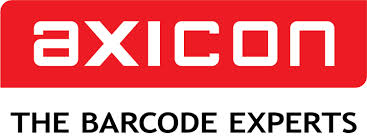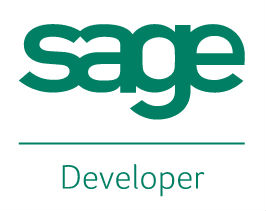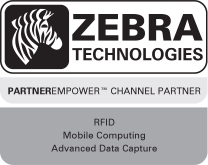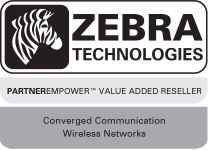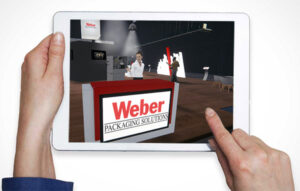WHAT IS BLUETOOTH?
Bluetooth is a global standard for a small radio module that is plugged into computers, printers, mobile phones, and other devices. A Bluetooth radio is designed to replace cables by taking the information normally carried by the cable and transmitting it over radio frequency in the unlicensed 2.4 GHz frequencies to a receiver Bluetooth radio chip.
WITH WHAT SPECIFICATION DOES THE ZEBRA BLUETOOTH RADIO COMPLY?
The Bluetooth (BT) radio inside Zebra’s mobile printers complies with BT Specification 2.0 and supports the Serial Port Profile (SPP). All print jobs sent to the printer will be done through the SPP, which is basically a BT emulation of an RS-232 serial communication.
WHAT RANGE DOES BLUETOOTH CONNECTIVITY HAVE IN ZEBRA’S MOBILE PRINTERS?
The ZBR (Zebra Bluetooth Radio) has a nominal 30 foot (10 meter) range in accordance with the BT Specification 2.0 for 0dBm power output. Range will depend greatly on the environment in which the equipment operates.
WHAT DEVICES CAN COMMUNICATE WITH ZEBRA’S BLUETOOTH PRINTERS?
Any computer or handheld device that has a Bluetooth radio inside and supports the Serial Port Profile (SPP) of the Bluetooth specification can communicate with Zebra mobile BT printers. However, due to their mobility, handheld computers are the devices of choice. Handheld computers can be Bluetooth-enabled through Bluetooth radios in the form of Compact Flash (CF) cards or they can have an embedded Bluetooth radio installed when manufactured.
WHAT INFORMATION CAN BE TRANSMITTED VIA BLUETOOTH TO ZEBRA MOBILE PRINTERS?
Most data that can be sent over a serial cable to a Zebra mobile printer can be transmitted via Bluetooth to a printer. The practical and intended uses are data that has been formatted for printing of receipts, labels, and barcodes in media up to four inches wide, depending on the printer model. Zebra provides a label creation utility called “Label Vista” to facilitate the formatting of labels or text. A programming manual and wireless configuration guide is also available.
WHAT TYPE OF SECURITY DOES BLUETOOTH SUPPORT?
The Bluetooth specification supports authentication and encryption. For the authentication algorithm, the size of the key used is always 128 bits. For the encryption algorithm, the key size may vary between 1and 16 octets (8-128 bits).
WHAT IS THE FRIENDLY NAME?
The Friendly Name is part of the printer local name (a combination of the printer model name and an alphanumeric string of characters). The alphanumeric string of characters is the “Friendly Name” of the device. This is the name provided by the printer during service discovery. The Friendly Name is a string of up to 20 characters long that is intended to be unique to each printer; it will default to the printer serial number if not changed by the user. The Friendly Name is used by the Zebra authentication algorithm.
WHAT ARE THE CONFIGURABLE BLUETOOTH SETTINGS IN MY PRINTER?
There are three: 1) Authentication, 2) Discoverable Mode, and 3) Friendly Name.
HOW DO I CONFIGURE THE BLUETOOTH SETTINGS IN MY PRINTER?
By default, a Zebra Bluetooth printer comes with the following settings: Authentication turned OFF, discoverable turned ON, and the “Friendly Name” of the printer as the printer serial number.
Also, the Bluetooth radio in the printer will always be a “slave device”. In other words, the printer will never be able to look for other Bluetooth devices to connect to and will never start the link itself. Those are “master” device functions. (Handheld computers will be the master devices). As the printer is a server, it is appropriate that it be a slave.
The settings that can be changed by the user are: Turn Authentication ON or OFF, turn Discoverable Mode ON or OFF, and change the Friendly Name of the printer to some other unique alphanumeric string such as an asset tracking number).
To change these settings, the user can use “Label Vista” or send printer programming language commands. Either way, the printer needs to be connected to a PC through a serial cable P/N BL11757-000. For programming commands, please refer to the Bluetooth Parameters section of the Mobile Printing Systems Programming Manual.
WHAT IS THE TRANSMITTING RATE THROUGH A BLUETOOTH CONNECTION?
According to the Bluetooth Specification, the over-the-air transmission rate is 1 Mbps. This is the raw data rate; the actual data rate will be somewhat less depending on a variety of factors (basically how much traffic is present on the Bluetooth piconet).
Note: The internal Bluetooth module in the printer has a UART interface to the printer processor set at 57600 baud. This rate is totally independent from the over-the-air transmission rate.
WHAT IS DEVICE AND SERVICE DISCOVERY?
A handheld with Bluetooth will have a Bluetooth manager or “user interface program” to manage the BT radio functionality. One of the functions of the Bluetooth manager program is the capability to send inquiries over the air to discover other Bluetooth devices in the vicinity (this is a Bluetooth master or client seeking to discover available Bluetooth servers). Once a server device is found, another inquiry poll is sent to discover the service the device provides. In Zebra’s case, the service provided by the printers is Serial Port Profile (SPP) printing.
WHAT IS ZEBRA PRINT ACTIVE X CONTROL?
The Zebra Print Active X control is a set of code that provides a simple interface to Zebra mobile printers. It currently supports four connection methods: serial (COM Port), infrared (IrDa), TCP, and Bluetooth. Bluetooth is supported via a simulated serial/modem connection.
After the Zebra Print Active X control is installed on the target Windows Pocket PC or CE device, it can be used from within any HTML document using Microsoft’s Jscript Web scripting language. The control can also be used from within any other programming language that supports Active X, such as Visual Basic or Visual C++. This control is available to users/developers of applications using Bluetooth mobile printers.
CAN 802.11B/G AND BLUETOOTH COEXIST IN THE SAME ENVIRONMENT?
Bluetooth and 802.11b/g share the same spectral band (2.4GHz). Therefore, cross-interference will be inevitable. The result can be a reduction in throughput. In general, Bluetooth devices are less susceptible to coexistence problems for the following reasons:
– Bluetooth is a Frequency Hopping Spread Spectrum technology (FHSS) which means that if a channel is busy, Bluetooth will immediately hop to a different channel to transmit the packet of information. 802.11b/g is a Direct Sequence Spread Spectrum (DSSS) technology.
– Shorter packets—Bluetooth packets are typically a fraction of a millisecond long compared with a few milliseconds for 802.11b/g. This reduces their collision susceptibility.
– Bluetooth is less considerate. An 802.11b/g station first waits for silence and only then transmits. Bluetooth, in the other hand, is inconsiderate of surrounding transmissions—it simply “barges in” whenever it has something to transmit.
In summary, these technologies can coexist. In fact, both options (Bluetooth and 802.11b/g) can be resident on your Zebra RW series or QL Plus series printer (select the “dual radio option”. However, if the number of Bluetooth devices is very large around a wireless network (802.11b/g), the throughput of the 802.11b/g devices will most likely be affected.



